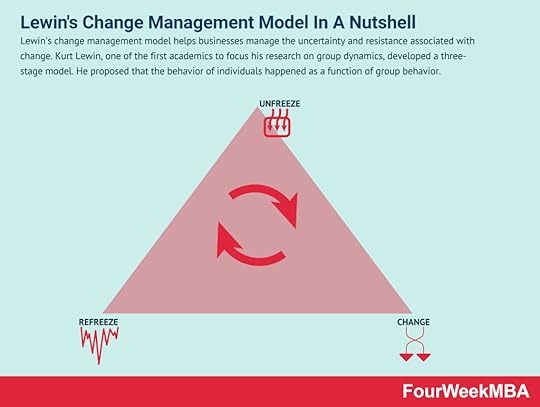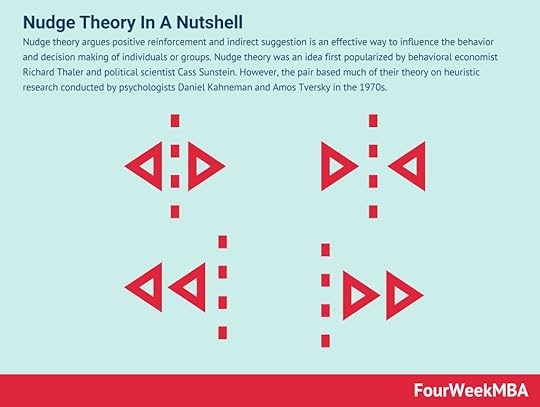Change Management Models
Change management models serve as metaphorical compasses that help guide an organization through the often difficult process of change. The primary objective of these models is securing employee buy-in because, without it, the initiative is likely to fail.
For the remainder of this article, we’ll discuss five of the most popular change management models in use today. Each provides its own take on the process of change with numerous concepts, theories, and methodologies.
Kotter’s change management model Harvard Business School professor Dr. John Kotter has been a thought-leader on organizational change, and he developed Kotter’s 8-step change model, which helps business managers deal with organizational change. Kotter created the 8-step model to drive organizational transformation.
Harvard Business School professor Dr. John Kotter has been a thought-leader on organizational change, and he developed Kotter’s 8-step change model, which helps business managers deal with organizational change. Kotter created the 8-step model to drive organizational transformation. Kotter’s change management model was created by Harvard Business School Professor John P. Kotter. The model is an eight-step approach that focuses on building enthusiasm for the change and helping employees understand why it needs to occur.
However, Kotter’s model does not account for employee feedback. This means it may be more suitable for larger companies where the consequences of alienating a few staff are less severe.
Briefly, the eight steps of the model include:
Create a sense of urgency.Assemble the change team.Formulate a strategic vision.Communication the vision to stakeholders.Remove potential barriers to change.Focus on short-term wins.Build and maintain momentum, andInstitute the change. McKinsey 7-S model The McKinsey 7-S Model was developed in the late 1970s by Robert Waterman and Thomas Peters, who were consultants at McKinsey & Company. Waterman and Peters created seven key internal elements that inform a business of how well positioned it is to achieve its goals, based on three hard elements and four soft elements.
The McKinsey 7-S Model was developed in the late 1970s by Robert Waterman and Thomas Peters, who were consultants at McKinsey & Company. Waterman and Peters created seven key internal elements that inform a business of how well positioned it is to achieve its goals, based on three hard elements and four soft elements. The McKinsey 7-S model was developed by McKinsey Company consultants Tom Peters, Julien Philips, and Robert Waterman in the 1980s. Since its release, the model has been widely accepted by academics, practitioners, and businesses alike.
The McKinsey model is a more complex interpretation of change management that emphasizes human resources instead of production factors such as capital or infrastructure. As a result, it is also better suited to larger organizations.
The seven interconnected elements of the model include:
Structure.Systems.Style.Staff.Skills.Strategy, andShared values.Lewin’s change management model Lewin’s change management model helps businesses manage the uncertainty and resistance associated with change. Kurt Lewin, one of the first academics to focus his research on group dynamics, developed a three-stage model. He proposed that the behavior of individuals happened as a function of group behavior.
Lewin’s change management model helps businesses manage the uncertainty and resistance associated with change. Kurt Lewin, one of the first academics to focus his research on group dynamics, developed a three-stage model. He proposed that the behavior of individuals happened as a function of group behavior. Lewin’s change management model is a three-step approach that was created by German-American organizational psychologist Kurt Lewin.
The three steps, which Lewin believes explain the process of change, include:
Unfreezing – to facilitate employee buy-in, each must be made aware of how the status quo is hindering the company and what is proposed to be done about it. Wherever possible, leaders must also explain the logic behind the change and how it can personally benefit employees.Changing – where the company implements the change and transforms or transitions to a new state. This step is marked by fear, uncertainty, and anxiousness. To ensure the change process moves to the third step, it’s important to repeat the benefits of upsetting the status quo.Refreezing – to ensure the change becomes the new status quo, it should be solidified, reinforced, and stabilized across the organization. This helps employees avoid falling back into old habits.Bridges’ transition modelBridges’ transition model was developed by William Bridges, an organizational consultant who posited that individuals should be supported and guided through the transition process.
Like Lewin’s interpretation, there are also three defined stages:
Ending, losing, and letting go – when many first hear about a planned transition, they react with a host of negative emotions. These emotions should not be denied or invalidated by leaders. Instead, it is important to reassure the employee and remind them that their skills are still relevant and valuable under the new status quo.The neutral zone – as the change occurs, employees may find adapting difficult and reminisce about simpler, less stressful times. There can be resentment, skepticism, and low morale. Leaders must encourage their subordinates to remain persistent and see the change through to the end.The new beginning – eventually, employees begin to settle in to the new way of operating and see a reward for their effort. The negative emotions experienced in step one are replaced with joy, hope, and optimism for the future. Nudge theory Nudge theory argues positive reinforcement and indirect suggestion is an effective way to influence the behavior and decision making of individuals or groups. Nudge theory was an idea first popularized by behavioral economist Richard Thaler and political scientist Cass Sunstein. However, the pair based much of their theory on heuristic research conducted by psychologists Daniel Kahneman and Amos Tversky in the 1970s.
Nudge theory argues positive reinforcement and indirect suggestion is an effective way to influence the behavior and decision making of individuals or groups. Nudge theory was an idea first popularized by behavioral economist Richard Thaler and political scientist Cass Sunstein. However, the pair based much of their theory on heuristic research conducted by psychologists Daniel Kahneman and Amos Tversky in the 1970s.Nudge theory is somewhat different to the other change management models in this list. Instead of providing a step-by-step framework, it emphasizes finding a way to move employees toward wanting to change on their own.
Nudge theory is mainly credited to American academics Richard H. Thaler and Cass R. Sunstein. The pair based their theory on research by psychologists Amos Tversky and Daniel Kahneman around heuristics, which are faulty systems of thinking that arise from habits, conditioning, and other weaknesses. By overcoming these systems, change can be more warmly embraced, accepted, and then implemented.
Key takeaways:Change management models serve as metaphorical compasses that help guide an organization through the often difficult process of change.Kotter’s change management model is an eight-step approach that focuses on building enthusiasm for the change and helping employees understand why it needs to occur. The popular McKinsey 7-S framework, on the other hand, takes a more human-centric approach to managing change.Other change management models include Lewin’s change management model, Bridges’ transition model, and Nudge theory. The latter is less a methodical approach and more one that is based on negative thinking systems.The post Change Management Models appeared first on FourWeekMBA.



